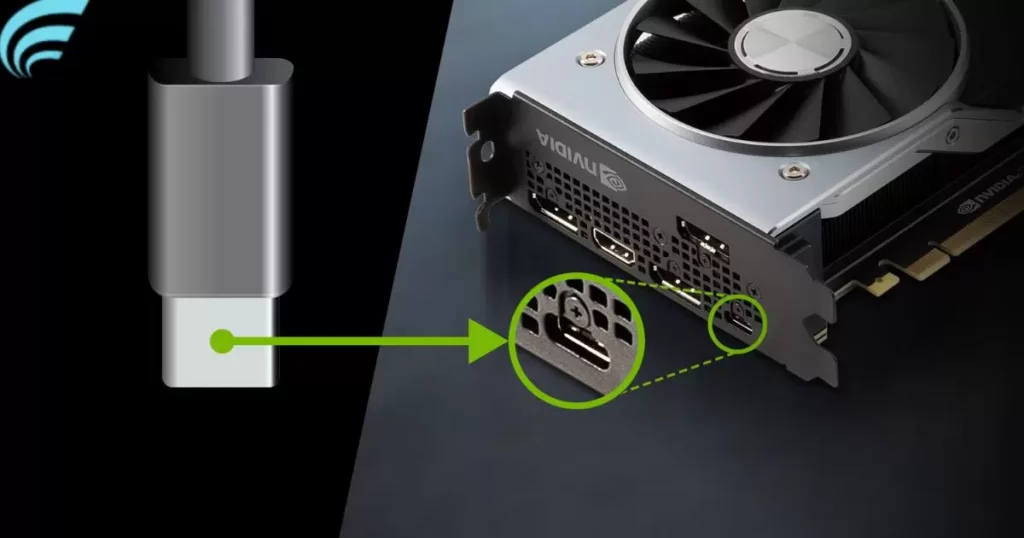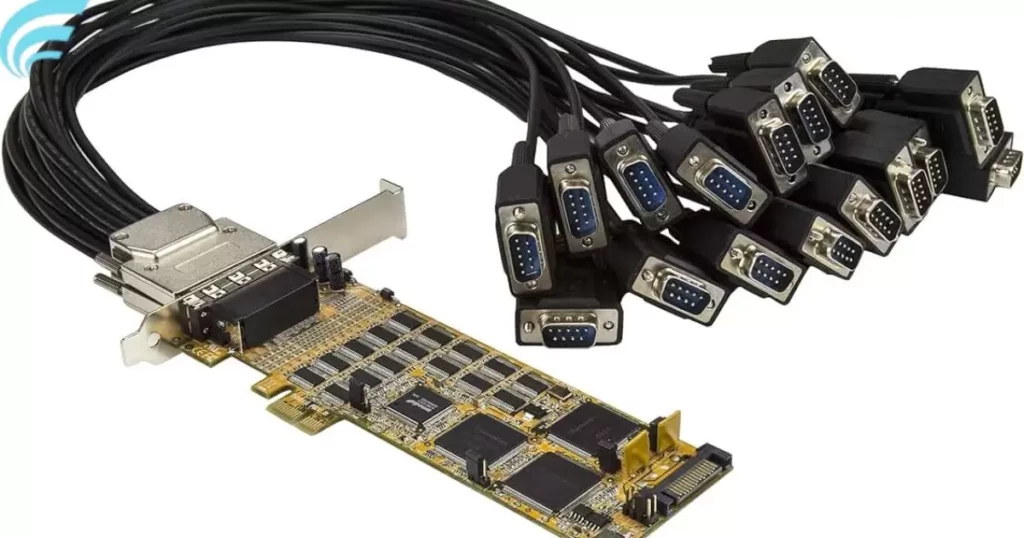A display port is like a cable that connects your computer to your monitor or screen. It’s the way your computer talks to the display, showing pictures and videos. Think of it as a bridge that helps your computer and monitor work together, so you can see everything on your screen. It’s an important link for a clear and smooth visual experience.
Ever find yourself staring at your computer, wondering which display port to use on GPU? The answer could transform your visual experience. Let’s unravel the mystery together and make sure your graphics are on point. Don’t miss out on discovering the key to unlocking your display’s full potential.
Choosing the right display port for your GPU is like picking the best road for your car. HDMI, DisplayPort, and DVI are the options, each with its own perks. Look at your monitor’s needs and match them with the port that suits it best. It’s a small choice that makes a big difference in how your visuals shine.
Types of Display Ports
Understanding the landscape of display ports is crucial when optimizing your GPU setup. HDMI, DisplayPort, and DVI are the key players. HDMI is like a universal language for devices, supporting both audio and video. DisplayPort excels in high-performance scenarios, making it a favorite for gaming and 4K displays. DVI, although somewhat outdated, can still be relevant for older hardware configurations.
When deciding on a display port for your GPU, such as in What Is A D3d11-Compatible GPU?, it’s essential to consider the capabilities of your monitor and the demands of your graphics card. Each type has unique features that cater to specific needs, so choosing the right one ensures an optimal visual experience.
Does DisplayPort on GPU matter?
Absolutely, the choice of DisplayPort on your GPU matters. The display port serves as the vital link between your graphics card and your monitor, determining how well they communicate. The right display port can enhance your visual experience, impacting factors like resolution, refresh rate, and overall performance.
Consider HDMI for versatility, supporting various devices beyond your computer. DisplayPort, known for its high data transfer rates, is a powerhouse for gaming and high-resolution displays. If you’re working with older hardware, DVI might still have its place. Ultimately, the display port on your GPU matters because it directly influences the quality of your visual output.
Does DisplayPort use graphics card?

Yes, indeed. The display port is a critical component that your graphics card uses to communicate with your monitor. It’s the conduit through which visual data travels, ensuring that the images and videos generated by your GPU reach your display device effectively.
Different display ports have varying capacities, affecting the quality and performance of the visual output. HDMI, DisplayPort, and DVI are the common types, each with its own strengths. The choice of which display port to use on your GPU directly impacts the clarity, resolution, and overall visual experience.
Which DisplayPort Should I Use on My GPU?
The question of which display port to use on the GPU is a common dilemma, but the answer depends on your specific needs. If you’re into gaming or working with high-resolution displays, DisplayPort is a strong contender due to its high data transfer rates. HDMI, with its versatility and support for audio, is a solid choice for various devices, not just computers. DVI, though less common, can still be relevant for older hardware configurations.
Consider the capabilities of your monitor and the requirements of your GPU when making this decision. The goal is to match the right display port with your setup to ensure optimal performance and a visually satisfying experience.
Does the GPU DP port matter?
Absolutely, the GPU DisplayPort (DP) port matters significantly. It’s the gateway through which your graphics card communicates with your monitor, influencing the quality and performance of the visual output. The type of DP port on your GPU, whether it’s HDMI, DisplayPort, or DVI, directly affects the clarity, resolution, and overall visual experience.
Modern GPUs often come equipped with multiple DP ports, providing flexibility for different display setups. Understanding the capabilities of each type of DP port helps you make an informed decision, ensuring that your GPU’s potential is fully realized.
Does it matter which port I plug my GPU into?
Yes, it matters. The port you choose to plug your GPU into can impact the overall performance of your graphics setup. Different ports have varying capabilities, and selecting the right one ensures that your GPU can deliver its full potential to your monitor.
When deciding which port to use, consider the specific needs of your monitor and the capabilities of your GPU. HDMI, DisplayPort, and DVI are common options, each with its own strengths. Matching the right port with your setup ensures a seamless and high-quality visual experience.
Why do graphics cards use DisplayPort?
Graphics cards use DisplayPort because it provides a high-performance interface for transmitting visual data to monitors and display devices. DisplayPort supports high resolutions, high refresh rates, and is capable of carrying audio signals as well. These features make it ideal for gaming, 4K displays, and other demanding visual tasks.
The versatility of DisplayPort allows it to keep up with evolving standards in display technology. It’s a preferred choice for modern GPUs, offering the bandwidth and capabilities needed to deliver a superior visual experience.
What Is a DisplayPort on a Graphics Card?

A DisplayPort on a graphics card is a physical connector that allows the GPU to communicate with a monitor or display device. It’s a standard interface for transmitting audio and video signals, providing a seamless connection between the graphics card and the display.
Different graphics cards come with various types of DisplayPorts, such as HDMI, DisplayPort, or DVI. The choice of which DisplayPort to use depends on the specific requirements of your monitor and the capabilities of your GPU. Understanding these connections ensures you can make the most of your graphics setup.
Watch Which DisplayPort to Use On GPU Video
If you’re a visual learner, watching a video on Which DisplayPort to Use on GPU can be immensely helpful. Visual guides can provide practical demonstrations, making it easier to understand the nuances of each display port type. Many online resources, including tutorials and reviews, offer valuable insights into selecting the right display port for your GPU.
Before making a decision, take the time to explore video content that addresses your specific needs and concerns. Seeing the information in action can enhance your understanding and empower you to make an informed choice for your GPU setup.
Pros and Cons of Display Port on a GPU
Choosing the right display port for your GPU involves considering the pros and cons of each option. Here’s a concise overview to help you make an informed decision:
| Displayport | Pros | Cons |
| HDMI | Versatile, supports audio, widely compatible | Limited data transfer rates compared to DisplayPort |
| DisplayPort | High data transfer rates are ideal for gaming and high-res displays | Less common in non-computer devices |
| DVI | Suitable for older hardware configurations | Becoming outdated and lacking audio support |
Consider your specific needs, monitor capabilities, and GPU requirements when weighing the pros and cons of each display port. This table provides a quick reference to assist you in making the right choice for your GPU setup.
FAQs
How do I determine the best display port for my GPU?
Consider your monitor’s capabilities and your GPU’s requirements: HDMI for versatility, DisplayPort for high performance, and DVI for older setups.
Can I mix different display ports on a single GPU?
While it’s possible, it’s not recommended for optimal performance; sticking to a consistent port type is advisable.
Does the length of the display port cable matter?
Yes, longer cables may result in signal degradation, affecting visual quality; choose an appropriate length for your setup.
Can I use adapters to connect different display ports?
Adapters can be used, but be cautious; they may impact performance, and not all combinations are advisable.
Is there a noticeable difference between display ports for everyday use?
For standard use, the differences may not be significant; choose based on your specific needs, such as gaming or high-resolution tasks.
Conclusion
In wrapping up the journey through display ports and GPUs, the question of which display port to use on a GPU boils down to understanding your specific needs. Whether it’s the versatility of HDMI, the high-performance capabilities of DisplayPort, or the relevance of DVI for older setups, the right choice ensures an optimal visual experience. Picture it like selecting the right road for a smooth drive Each display port type is a different path, and your GPU is the vehicle.
So, consider the roadmap of your monitor’s requirements and your GPU’s demands to make an informed decision. With the right display port, you unlock the full potential of your graphics setup, ensuring that every visual journey on your computer screen is a delightful one.











